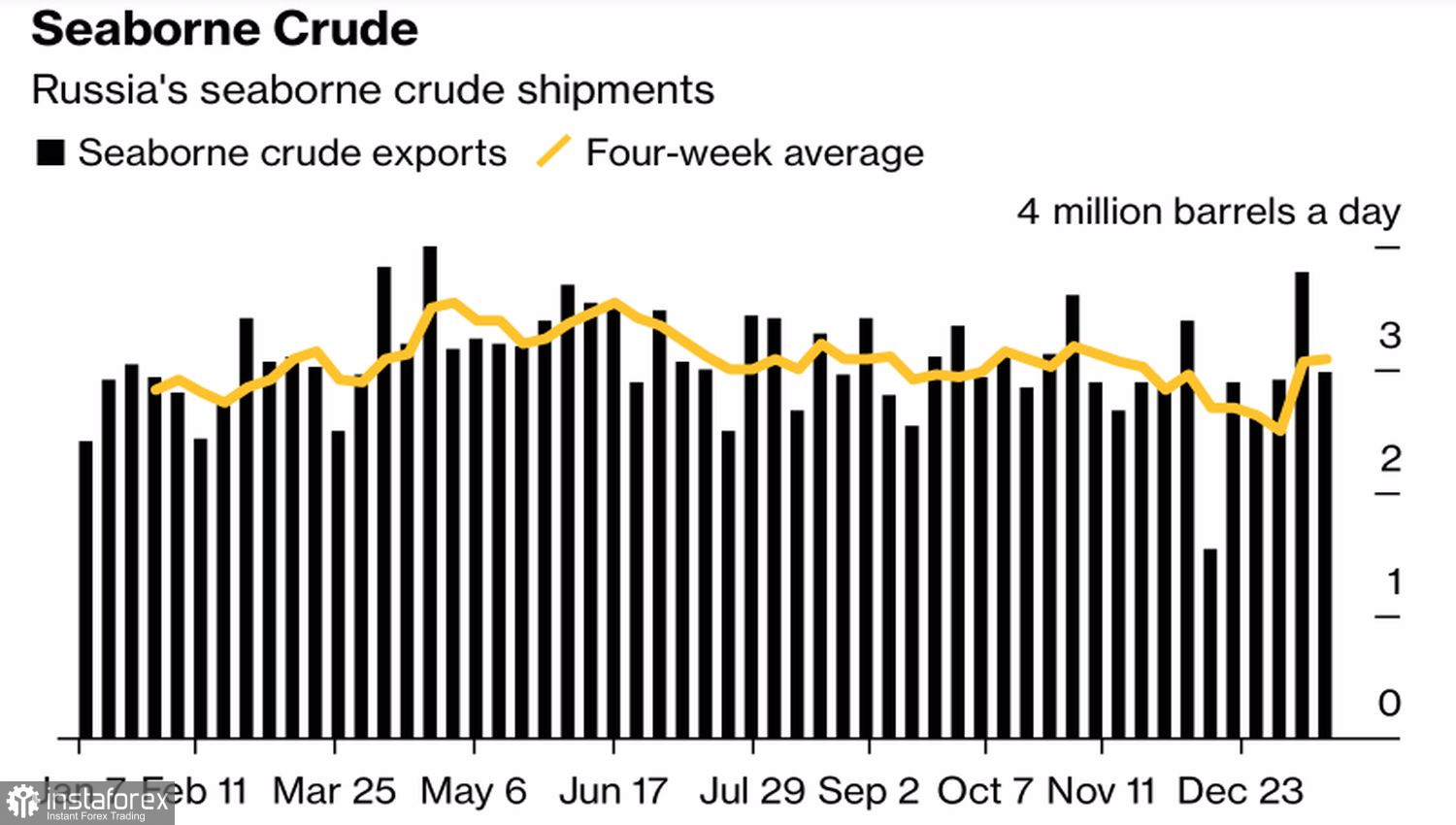All roads in the oil market now lead to Beijing. According to the IEA, China will be the main reason for the growth of global demand to a record level of 101.7 million bpd. China will continue to dictate the rules of the game after the entry into force of the EU embargo on Russian diesel fuel and the price ceiling for petroleum products in early February. Will it want to increase its own exports or limit them to protect the domestic market? The fate of Brent will depend on the answers to these questions.
Hedge funds do not doubt the support from the reopening of China's economy and the eurozone economy, which presents pleasant surprises. In the week to January 17, they increased net longs for six key oil futures contracts by 89 million barrels in equivalent. We are talking about the fastest dynamics of the indicator since November 2020. The most popular was the North Sea variety, which accounted for 55 million barrels.
The increased activity of bull speculators is based on a solid foundation. On the one hand, leading indicators on the growth of passenger and freight traffic in China convince us that the IEA's increase in the forecast for oil demand from China by 100,000 bpd, to 15.9 million bpd, in 2023 is quite justified. On the other hand, the mixed dynamics of offshore deliveries of Russian oil signals that supply problems are not an empty phrase.
Dynamics of offshore exports of Russian oil

Meanwhile, the market is preparing for new shocks due to the introduction of the EU embargo on Russian diesel fuel. On paper, the EU's refusal to work with the largest supplier will lead to a sharp rise in prices, which could push oil futures even higher. Moreover, the eurozone will need to look for new partners, and logistical problems will further increase the tension. In fact, information about the next sanctions has been known for a long time, and whoever is warned is armed. Over the last three months of 2022, Russian diesel exports to the EU increased by 25% QoQ, with inventories at a key hub in the Netherlands rising to their highest level since October 2021.

Now Europe will focus on supplies from the Middle East, India and China. And the first cargoes from China have already arrived in Latvia. If Beijing continues to increase exports, its demand for oil will increase even more, which will affect Brent. At the same time, there are risks that an increase in the price of oil in the world may provoke China to limit the export of diesel fuel in order to protect its own economy from a blow. I don't think these fears are justified. China buys Russian oil, which costs almost half the market value.
Technically, the breakout of the upper boundary of the downward long-term trading channel, coupled with the implementation of the 1-2-3 reversal pattern, are the first signs of a break in the bearish trend. We continue to increase the longs formed from the level of $83.4 per barrel. The initial targets are still $91.75 and $97.25.
 English
English 
 Русский
Русский Bahasa Indonesia
Bahasa Indonesia Bahasa Malay
Bahasa Malay ไทย
ไทย Español
Español Deutsch
Deutsch Български
Български Français
Français Tiếng Việt
Tiếng Việt 中文
中文 বাংলা
বাংলা हिन्दी
हिन्दी Čeština
Čeština Українська
Українська Română
Română

